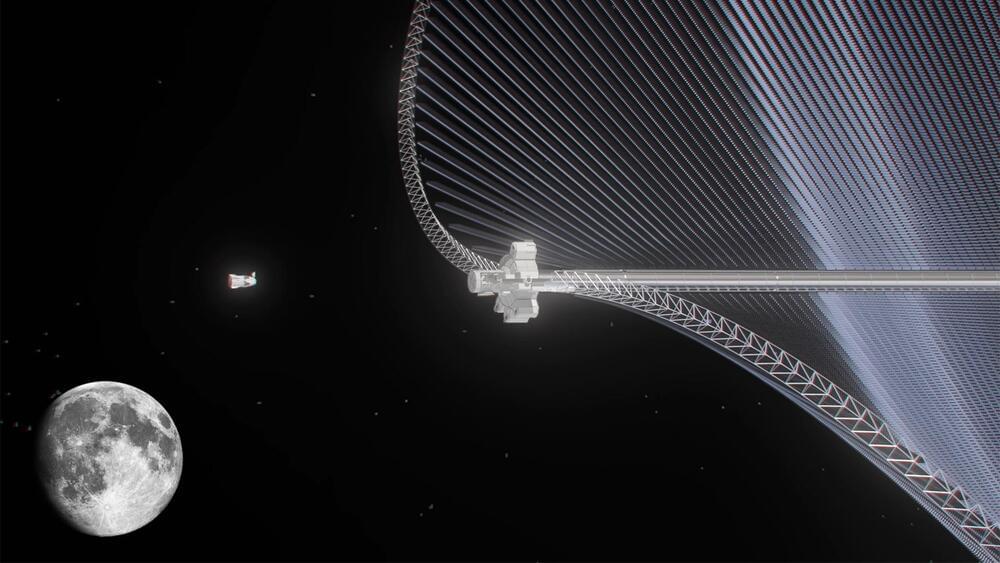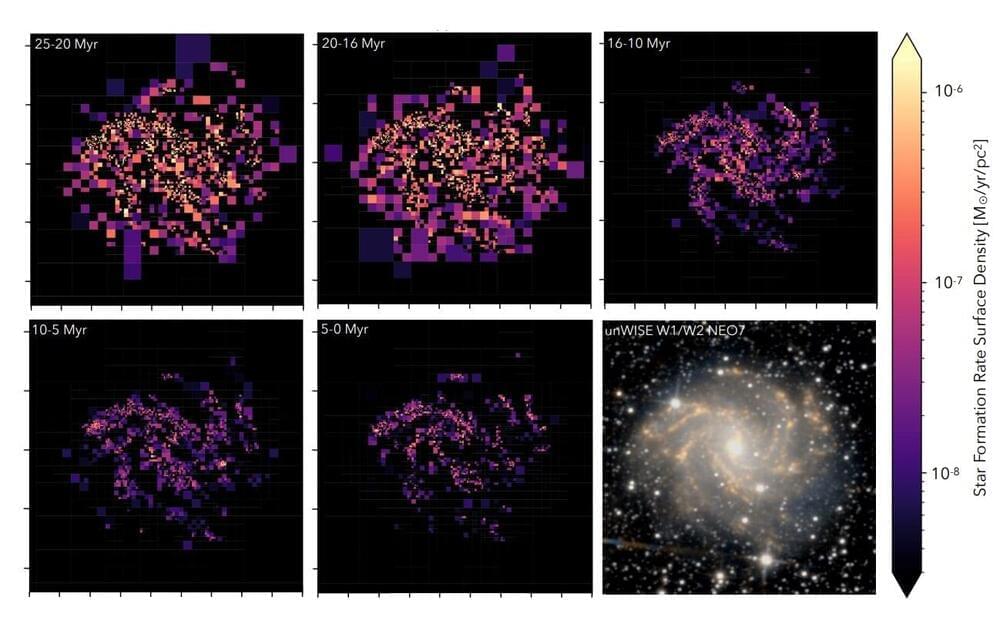The historic moon landing had a big impact on Whitson, who was nine at the time.
Category: space – Page 295
New Evidence Suggests the Universe Is Twice as Old as We Thought
Most astronomers believe the universe is 13.7 billion years old. A new study says that figure could be closer to 26.7 billion.

Solar space butterfly could power lunar outposts around the clock
According to a study by Astrostrom for ESA, future Moon bases could be powered by a giant space butterfly called the Greater Earth Lunar Power Station (GEO-LPS) covered with solar panels made from lunar materials beaming microwaves to the surface.
One of the major design concerns in setting up a lunar base is finding a reliable means of powering it. Solar power might seem the obvious answer, but with lunar nights lasting 14 Earth days, it isn’t a practical option. However, though the most promising alternative is currently a small nuclear reactor, solar may not be out of the running.
The idea of solar power plants in space has been around for well over half a century. On Earth, solar panels are limited by night time, atmospheric haze, and bad weather, making them only capable of intermittent power generation with limited efficiency. On the other hand, in space, where there is no night and no atmosphere, solar power becomes very attractive.

Trillions of rogue planets may be wandering alone in our galaxy
In an astonishing revelation, researchers from NASA and Japan’s Osaka University have uncovered data suggesting the rogue planets – those solitary wanderers unhinged from any star – significantly outnumber the approximately hundred billion planets which orbit stars.
The findings indicate that NASA’s Nancy Grace Roman Space Telescope, slated for launch by May 2027, could discover as many as 400 rogue planets similar in mass to Earth. A likely candidate for this category has already been singled out from the data.
David Bennett is a senior research scientist at NASA’s Goddard Space Flight Center and co-author of two papers detailing these findings.
Neutral Monism: Reintegrating Space, Time and Conscious Experience (Prof. Michael Silberstein)
Lecturer: Prof. Michael Silberstein.
Department of Philosophy.
Elizabethtown College.
Title: Neutral Monism: Reintegrating Space, Time and Conscious Experience.
Date: 22 October 2018
This is a recorded talk of the online seminar “Progress and Visions in the Scientific Study of the Mind-Matter Relation”.

Astronomers may have found two exoplanets sharing the same orbit
We may have the first concrete evidence of ‘mind-blowing’ Trojan exoplanets.
An international team of astronomers used the Atacama Large Millimeter/submillimeter Array (ALMA) to find what they believe is a ‘sibling’ alien world to an exoplanet orbiting a distant star.
The team detected a cloud of debris that may be sharing the planet’s orbit and could be the building blocks of a new planet or the remnants of one in the process of forming a press statement reveals.

In a world first, astronomers discover ‘mind-blowing’ two-faced star
K. Miller, Caltech/IPAC
White dwarfs are the burnt-out cores of dead stars that may have once resembled our sun.

Astronomers investigate recent star formation history of the Fireworks Galaxy
Astronomers from the University of Washington in Seattle and elsewhere have conducted Hubble Space Telescope (HST) observations of the nearby Fireworks Galaxy. Results of the observational campaign, presented July 10 on the preprint server arXiv, yield crucial insights into the recent star formation history of this galaxy.
Discovered in 1,798, the Fireworks Galaxy (also known as NGC 6946) is a nearby face-on star forming spiral galaxy located some 25.5 million light years away. The galaxy has a size of 87,300 light years and its name was coined due to an unusually large number of supernovae observed in it—about ten times more than in the Milky Way.
Although many studies of the Fireworks Galaxy have been conducted to date, its star formation rate (SFR) is not well constrained, estimated to be between three and 12 solar masses per year. This discrepancy is mainly due to the diverse methods of measuring star formation rate and the wide range of different distances used.
